California just got sued for letting its humpback whales die off
Before we embark, we’re warned: there may be no whales. Humpbacks don’t contract with the Santa Cruz sailors who take tourists out in California’s Monterey Bay, and every voyage is a crapshoot.
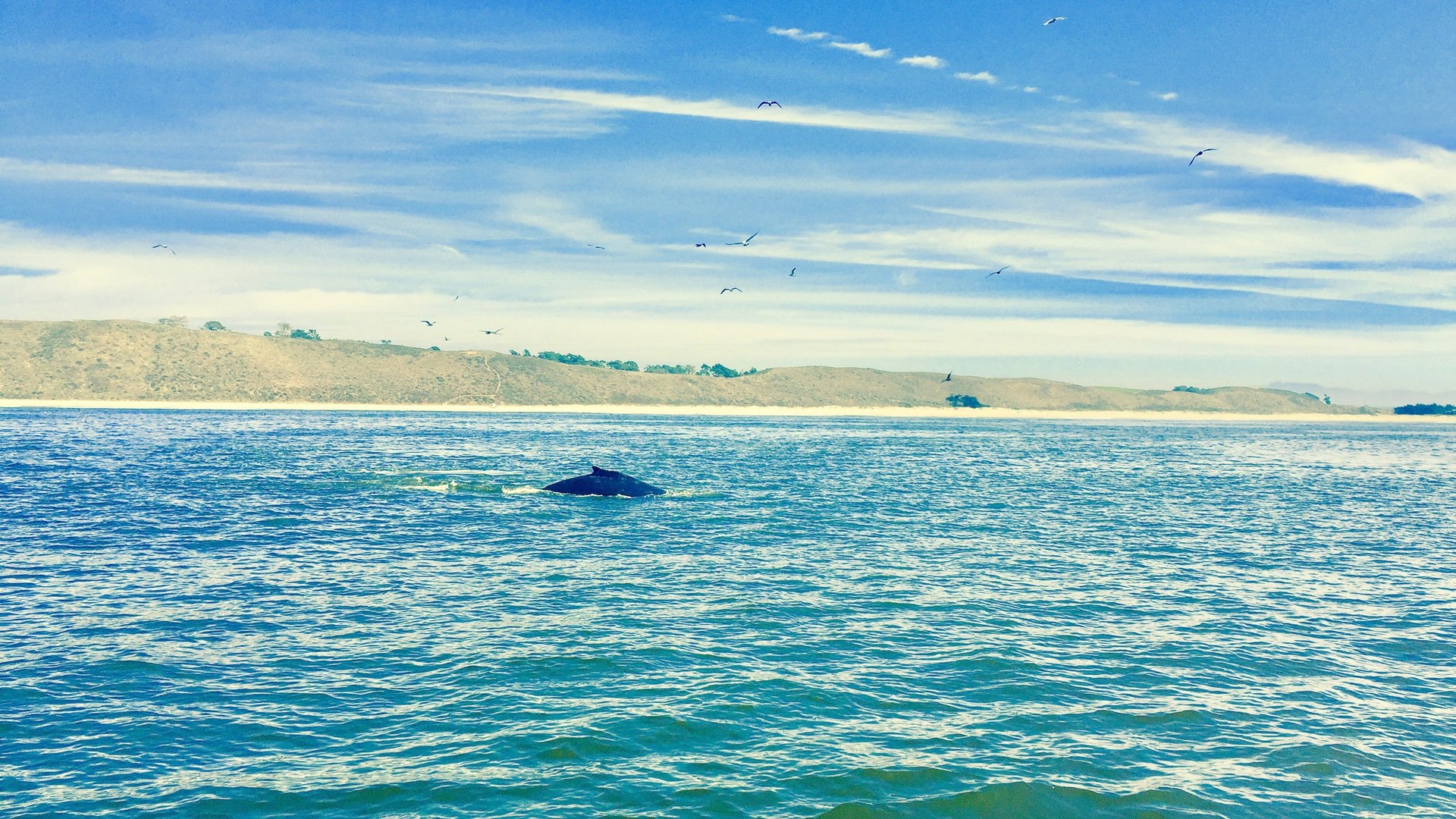

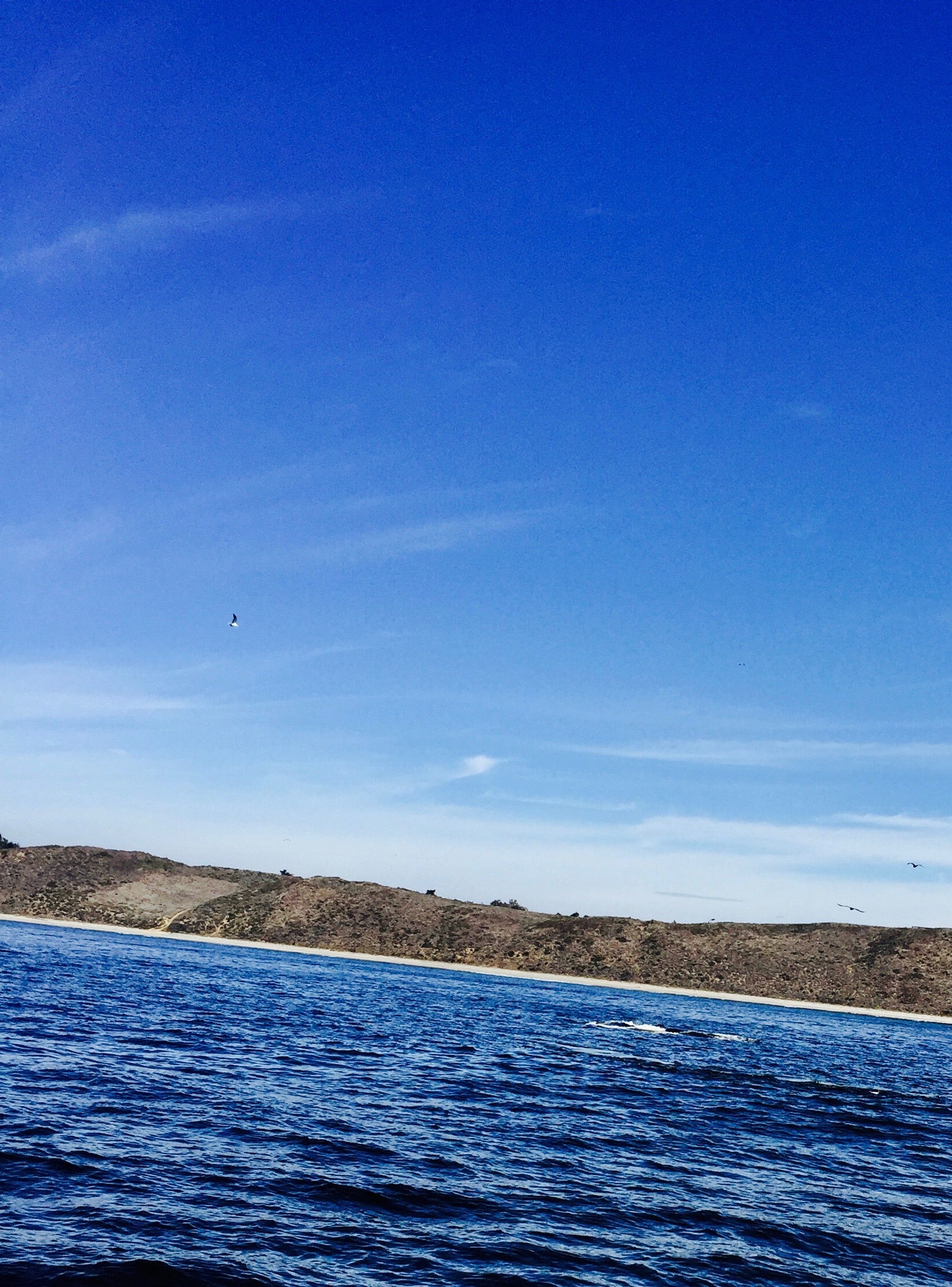
Before we embark, we’re warned: there may be no whales. Humpbacks don’t contract with the Santa Cruz sailors who take tourists out in California’s Monterey Bay, and every voyage is a crapshoot.
Still, we’ve got information and tools, a 50-foot motorized vessel with an underwater “fish finder” that allows the captain to track the ocean life that humpbacks like to snack on. A guide describes to us what we hope to see: a breaching body, dramatic black fins surfing above water, a curved tail fanning from the sea’s depths, a tower of condensation, called blow, created when the humpback exhales gallons of hot breath into cool air.
“That’s where we get the old sailing expression ‘thar she blows,’” the guide says. Her linguistic tidbit is met with many blank stares; based on the many languages spoken on deck, it seems we whale watchers are a varied bunch from near and far.
Some have binoculars. Most don’t. All 30 of us line up along either side of the boat, eyes peeled, staring into the distance. It is around noon on a Friday in late September, and the sun is just starting to burn through the fog as we head to sea.
I’m on board because a Quartz London reporter is visiting and his friend from New Zealand highly recommends whale watching in the Monterey Bay. Although I’ve lived in Santa Cruz four years, this is my first such journey. Living in this aquatically rich area, humpbacks seem like no big deal and I’ve instead devoted myself to activities closer to shore, paddle-boarding by the bay’s beaches among sea lions, sea otters, seals, whales, and sharks. In general, it has felt as if sea creatures abound and have nothing to fear from humans.
Hanging with humpbacks
Appearances can be deceiving, however. Contact with humans and their stuff has historically harmed whales and continues to do so today, including in California’s Monterey Bay.
As fans of Herman Melville’s Moby Dick know, whales were once widely hunted. Their various parts were used for oils, candles, soaps, cosmetics, perfumes, corsets, umbrellas, food, fertilizer and even tennis-racket strings. The huge aquatic animals are relatively slow, and so easy to harpoon. And a big beast could yield about 25 tons of oil, plus meat, bones, and parts.
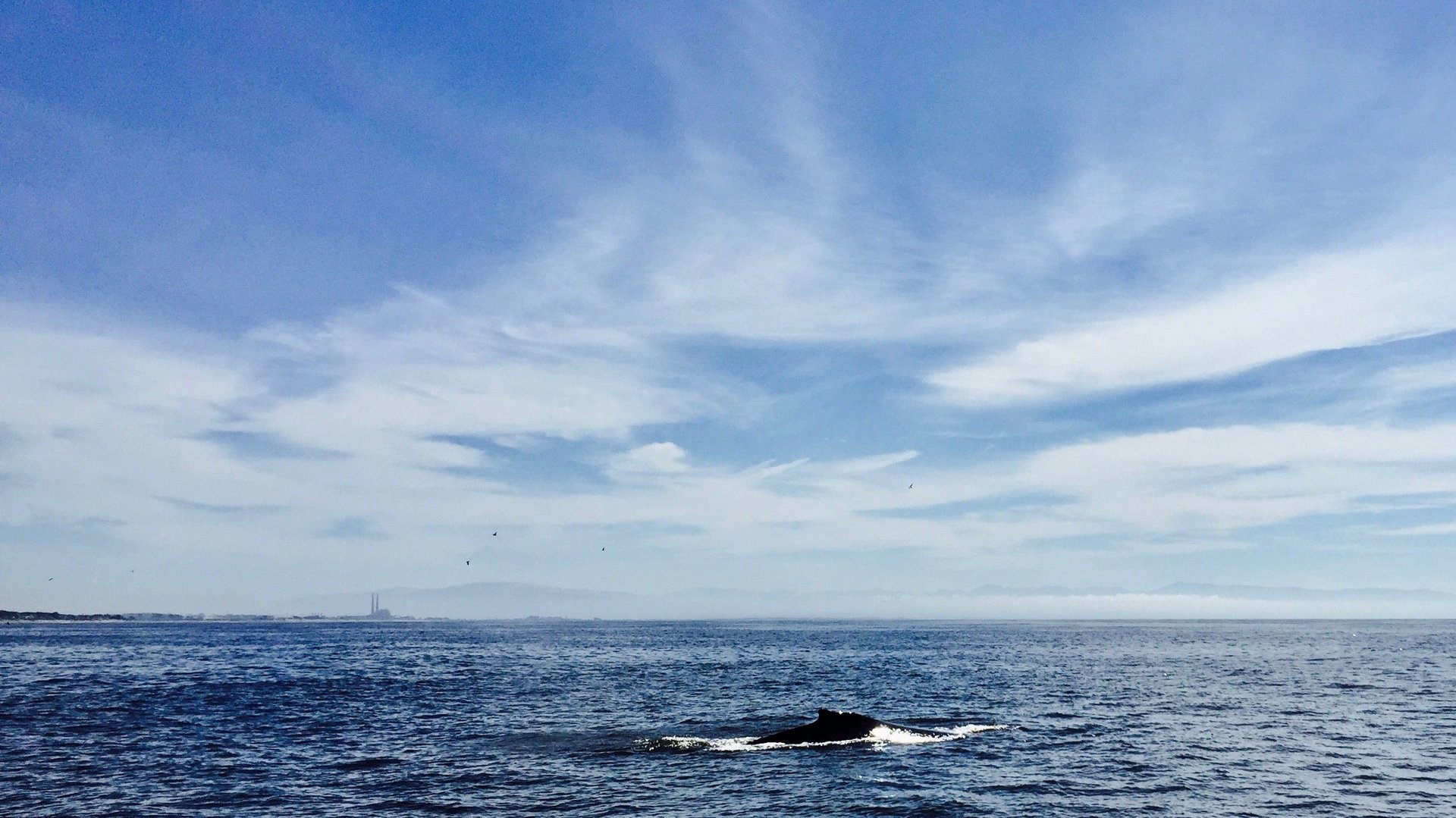
Humpback hunting grew throughout the 17th, 18th, and 19th centuries. By the 20th century it seemed humans would hunt whales to extinction, and in 1946 the International Whaling Commission was formed “to provide for the proper conservation of whale stocks and thus make possible the orderly development of the whaling industry.” The commission set an “indefinite moratorium” on commercial whaling in 1986, at which point petroleum had long since replaced whale oils, corsets were out of fashion, and plastics worked for pretty much everything.
Nonetheless, commercial whaling continues in Japan, Norway, and Iceland, where whale meat is a delicacy. Meanwhile, whales in the US—on both the Atlantic and Pacific coasts—are dying at alarming rates, and even though commercial whaling is no longer the cause, it seems people are still to blame.
Ships in the night
In September, the National Oceanic and Atmospheric Administration declared an Unusual Mortality Event for humpback whales across the Atlantic coast. In 2016, over 25 stranded humpbacks washed up ashore; in 2017, that number was surpassed in August. In each of the 10 previous years, only 7-17 humpbacks were stranded annually.
It’s not yet clear why more whales are washing up now but many of the dead show evidence of having been injured by contact with a vessel. Based on the findings thus far, ship-strike rates were six times higher in 2016 than they were in any one of the prior 16 years.
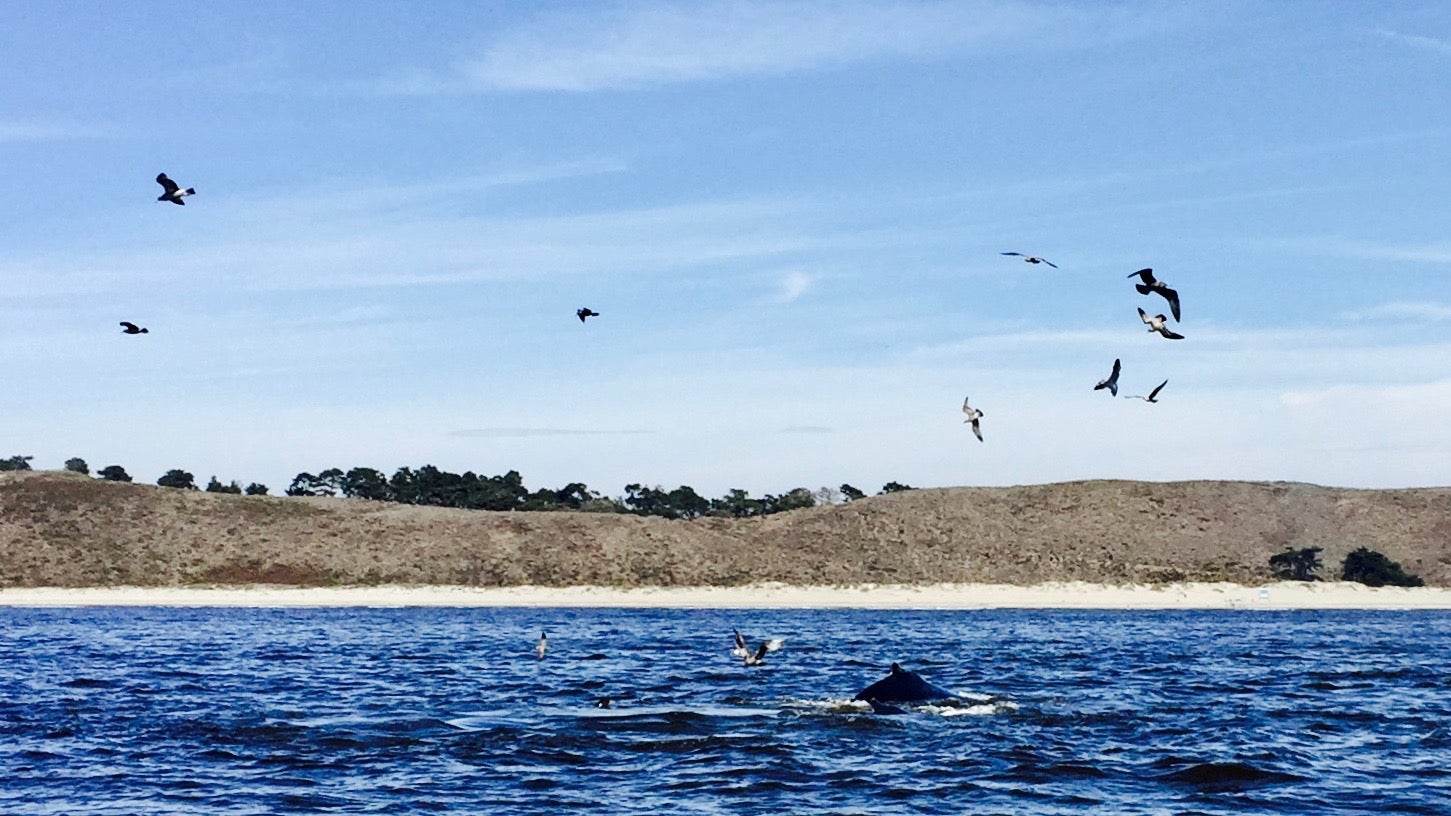
Boats aren’t the only concern. Marine biologists in New England, tracking humpbacks off the waters of Bar Harbor, Maine worry that climate change is driving new whale behavior. Warming seas are forcing the whales that usually ply the Atlantic waters off of Maine into foreign aquatic territories in search of food. There are fewer whales seen around Bar Harbor than ever before—only eight humpbacks were spotted this summer compared to the usual dozens.
Scott Kraus of Anderson Cabot Center for Ocean Life at the New England Aquarium—who is studying these dwindling humpbacks—told the New York Times (paywall) changing conditions are forcing more dangerous travels for the whales. “Food is becoming more patchy and less reliable, so animals are moving around more. The more you move around, the higher the chance of entanglements,” he says.
All caught up
On Oct. 4, the Center for Biological Diversity, an Oakland, California nonprofit advocating for protection of endangered species, sued (pdf) the California Department of Fish and Wildlife (CDFW), claiming that skyrocketing whale entanglements caused by California’s commercial Dungeness crab fishery’s nets are illegal “takes” under the federal Endangered Species Act.
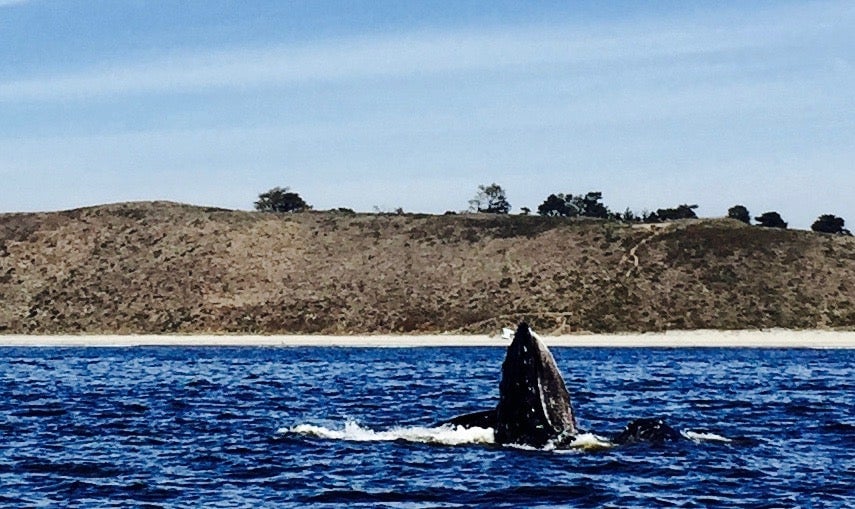
By failing to control the state fishery, the lawsuit argues, the CDFW is responsible for the deaths of whales and sea turtles. “Entanglement in commercial fishing gear is one of the primary threats impeding the recovery of imperiled humpback whales, blue whales, and leatherback sea turtles,” according to the complaint.
‘There were 71 reported whale entanglements last year, up from 62 in 2015 and 30 in 2014. Before that, whale entanglement reports averaged fewer than 10 per year,” according to the nonprofit. “Many of last year’s entanglements were clustered around the biologically rich Monterey Bay, where migrating whales came to feed.”
Anchovies for lunch
“Look, look!” I say, pointing at a black blob above the water that seems to be moving. Our guide reports my find to the captain but he’s not impressed by a single humpback in the distance. He says he’s after bigger fish, which we’ll catch by following the massive school of anchovies he’s spotted not far off. From his perch on the upper deck, he promises multiple whales and the possibility of experiencing the unique stench of a post-anchovy-meal blow.
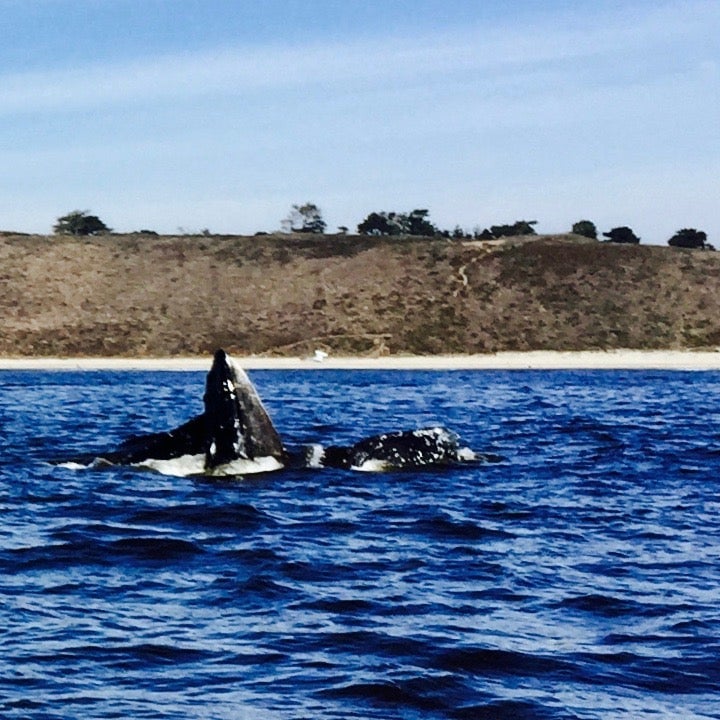
We continue. Most of the trip is like this, a quick glance at a massive, far-away creature who will never reveal itself entirely, and lots of squinting into the sunny blue distance as the boat rolls over the water, the rocking and roar of its engine lulling me to sleep. It’s chilly and windy and pretty quickly people start fiddling with their phones, posting photos to Instagram and Twitter from inside the cabin while munching on candy bars.
But good things come to those who wait. Just as it’s about time to turn back to the shore, we hit the whale-watching jackpot. An unfortunate school of anchovies serves as lunch to multiple humpbacks alongside a pack of sea lions and birds big and small. Creatures dart in and out of the water around the large black masses emerging from the blue, the whales with their split tails only ever partly visible but impressing us with their heft even from afar. ”Some days, those anchovies make my job so easy,” the captain jokes as he heads back to Santa Cruz.